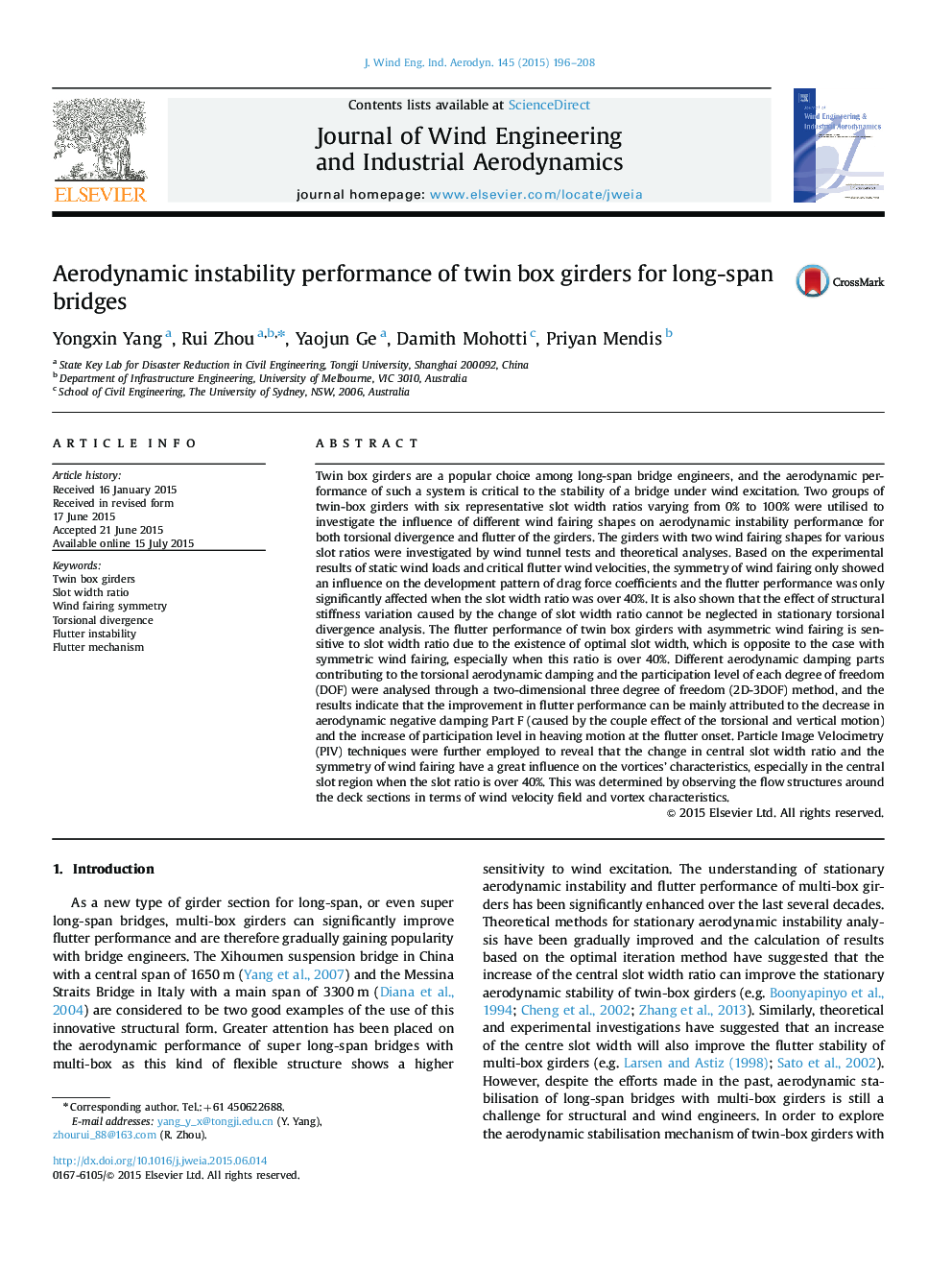| کد مقاله | کد نشریه | سال انتشار | مقاله انگلیسی | نسخه تمام متن |
|---|---|---|---|---|
| 293255 | 511122 | 2015 | 13 صفحه PDF | دانلود رایگان |
• Torsional divergence of twin-box girders with six slot width ratios was investigated.
• Flutter instability and flow patterns of twin-box girders were evaluated.
• Slot width ratio has great influence on heaving participation level and flow pattern.
• Wind fairing’s shape has slight influence on the stationary aerodynamic instability.
• Wind fairing changes vortices' characteristics in the central slot significantly.
Twin box girders are a popular choice among long-span bridge engineers, and the aerodynamic performance of such a system is critical to the stability of a bridge under wind excitation. Two groups of twin-box girders with six representative slot width ratios varying from 0% to 100% were utilised to investigate the influence of different wind fairing shapes on aerodynamic instability performance for both torsional divergence and flutter of the girders. The girders with two wind fairing shapes for various slot ratios were investigated by wind tunnel tests and theoretical analyses. Based on the experimental results of static wind loads and critical flutter wind velocities, the symmetry of wind fairing only showed an influence on the development pattern of drag force coefficients and the flutter performance was only significantly affected when the slot width ratio was over 40%. It is also shown that the effect of structural stiffness variation caused by the change of slot width ratio cannot be neglected in stationary torsional divergence analysis. The flutter performance of twin box girders with asymmetric wind fairing is sensitive to slot width ratio due to the existence of optimal slot width, which is opposite to the case with symmetric wind fairing, especially when this ratio is over 40%. Different aerodynamic damping parts contributing to the torsional aerodynamic damping and the participation level of each degree of freedom (DOF) were analysed through a two-dimensional three degree of freedom (2D-3DOF) method, and the results indicate that the improvement in flutter performance can be mainly attributed to the decrease in aerodynamic negative damping Part F (caused by the couple effect of the torsional and vertical motion) and the increase of participation level in heaving motion at the flutter onset. Particle Image Velocimetry (PIV) techniques were further employed to reveal that the change in central slot width ratio and the symmetry of wind fairing have a great influence on the vortices’ characteristics, especially in the central slot region when the slot ratio is over 40%. This was determined by observing the flow structures around the deck sections in terms of wind velocity field and vortex characteristics.
Journal: Journal of Wind Engineering and Industrial Aerodynamics - Volume 145, October 2015, Pages 196–208
